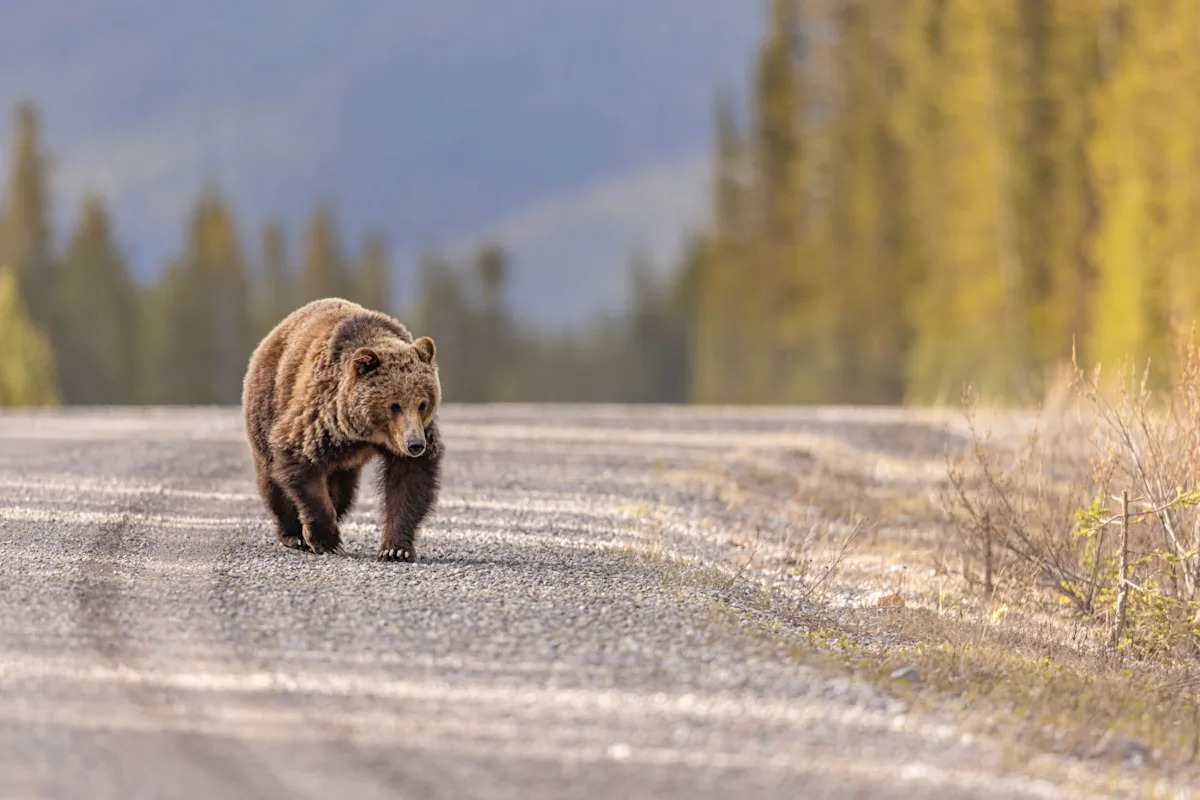Every year, the mountains are getting a little smaller for the grizzly bear.
Trails on which they’ve walked for generations are now dead-end highways. Valleys once rich with berries are being fenced off by new towns and mining sites. Little by little, their world is shrinking. That change is easy to miss unless you’re living it the way they are.
What’s happening?
Grizzly bears in the Canadian Rockies are quickly running out of space to live, and it’s not because the mountains have changed; it’s because we have.
A report from CBC News detailed how a 20-year tracking project followed the progress of over 100 GPS-collared bears across British Columbia and Alberta.
Coal mines, highways, small towns, and reservoirs continued to slice through their habitat. Or, as lead author Eric Palm of the University of Montana put it, “There already has been quite a bit of connectivity loss for grizzly bears in the southern Canadian Rocky Mountains.”
From 2013 to 2022, Alberta recorded 235 grizzly deaths tied to people. Many began with a roadside detour. Grass, wildflowers, and thick buffaloberry bushes grow along the edges of highways, attracting bears — and that puts them in danger of vehicle collisions or human contact.
The research behind those numbers mapped 85,000 square kilometers of bear range over two decades. GPS tracks rarely ran straight. They bent wide, tracing how grizzlies avoided highways, industrial sites, and towns whenever they could.
Palm, who led the study, said the baseline was already poor. “Any additional losses could eventually have population-level effects,” he warned.
Why is grizzly bear habitat loss important?
When bears can’t travel between ranges, isolation sets in. Over time, that separation weakens the population. Palm noted most southern Rockies grizzlies stay in the mountains, but valleys — where some of the best food grows — are also where human development is heaviest.
Speaking to CBC, Tal Avgar, a wildlife ecologist at the University of British Columbia and study co-author, put it bluntly: a “grizzly bear that wants to live a long and happy life needs to avoid humans as much as possible.”
Sometimes, though, survival means taking that risk.
What’s being done about grizzly bear habitat loss?
Animal crossings have helped reconnect parts of wildlife ranges, giving creatures safer ways over or under busy roads.
Palm said they’re not a cure-all, but in the right spots, they work. Avgar supports long-term planning to keep multiple travel corridors open so bears can move freely.
Other measures to support bear populations include reintroducing grizzlies in the Bitterroot Mountains, reducing conflicts with ranchers, and relocating bears from dangerous areas.
These steps help, but without large, connected stretches of wild habitat, long-term survival remains uncertain.
Join our free newsletter for good news and useful tips, and don’t miss this cool list of easy ways to help yourself while helping the planet.
